To Plant or Not to Plant
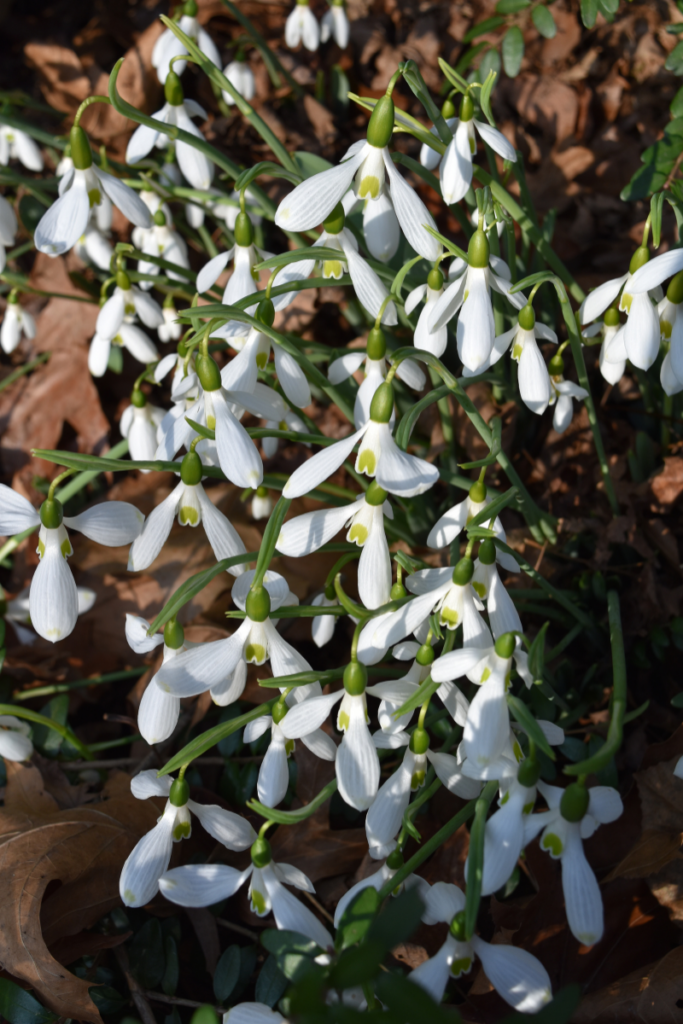
As another year rolls around, it is a good time for reflection about past gardens and planning those that are to come. On my desk, as I write, are lists with headings that read “must grow these again” and “waste of bed space—do not buy this again.” This last one is a short one at the moment as I cannot remember the name of that pink dahlia that looks fabulous in the catalog but is pitiful in my garden, so I keep buying it. The third list is the wish list—this is by far the longest. Anything that catches my eye in a garden, a book, or magazine gets added to this list for further research and locating a source.
In the days before the internet, we had this magical book called Gardening by Mail that I first found in our public library. It contained the names of nurseries, the types of plants they sold, and how to send off for their catalogs. I would send off a few $1 bills in an envelope and wait for the catalog to be mailed to me. This was the only way to find some of the more unusual plants unless you lived near an arboretum, or a garden club that held a plant sale.
These days we should be spoilt for plant choices with Google searches in the palm of our hands. Somehow, the plants that are on my wish list are still not easy to find. At this point you might be thinking that I am difficult—I am sure that my family would agree. However, growing plants for sale is a time-consuming, costly process that is not always easy, and plants can go in and out of fashion so quickly.
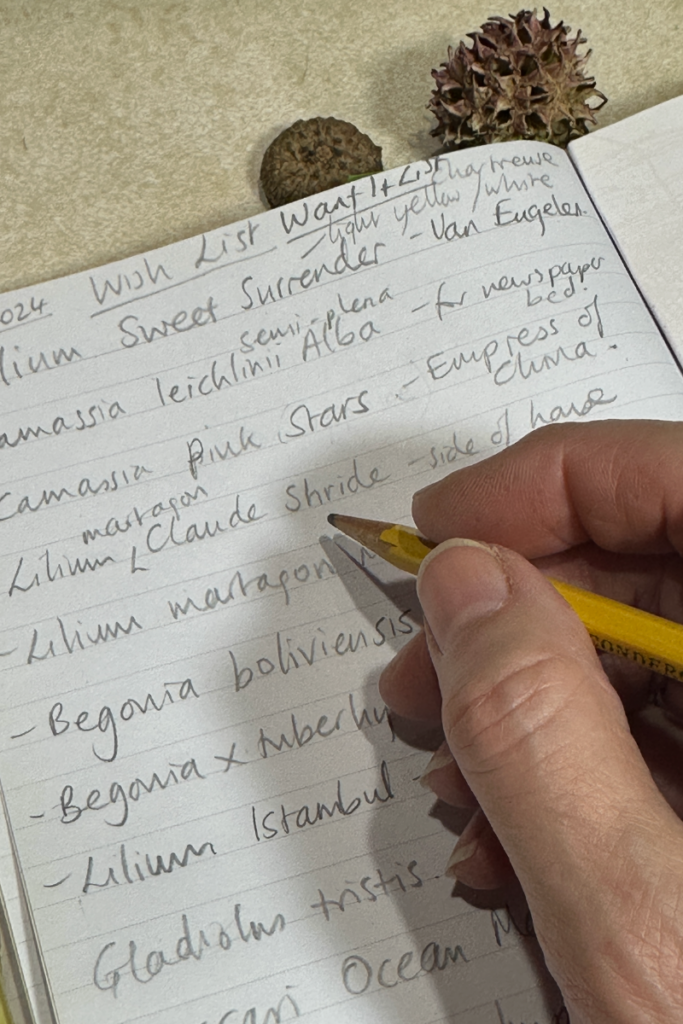
My thoughts as I ponder my garden this year are these: I want to continue to support the small businesses that grow their own plants (especially ones that are nearby); I am going to carry on growing as many plants as I can from seeds, bulbs, and little plug plants because they are easy and cheap to ship and I can get a wide diversity; and finally, I want to support plant sales at public gardens so that they can benefit financially. The wildcard here is, of course, if it is a gorgeous pink flower, I have to have it!
My Garden Travels: Crook Hall
My trip to England in December gave me the chance to visit a few wintery gardens. The first was a new one for me, the National Trust’s Crook Hall. The garden is on a sloping site with views of Durham Cathedral. At its core, there is a building that dates from the 1200s where, on the day that we visited, musicians were playing old songs. We had a chance to join in and ring some hand bells. Outside, I loved the wintery tree outlines and their reflections in the still water in the “dry” moat. The vegetable garden yielded a super “dead hedge” with upright wooden stakes and twigs, branches, and ferns stuffed between them. A strategically placed inner chicken wire layer kept out the critters.
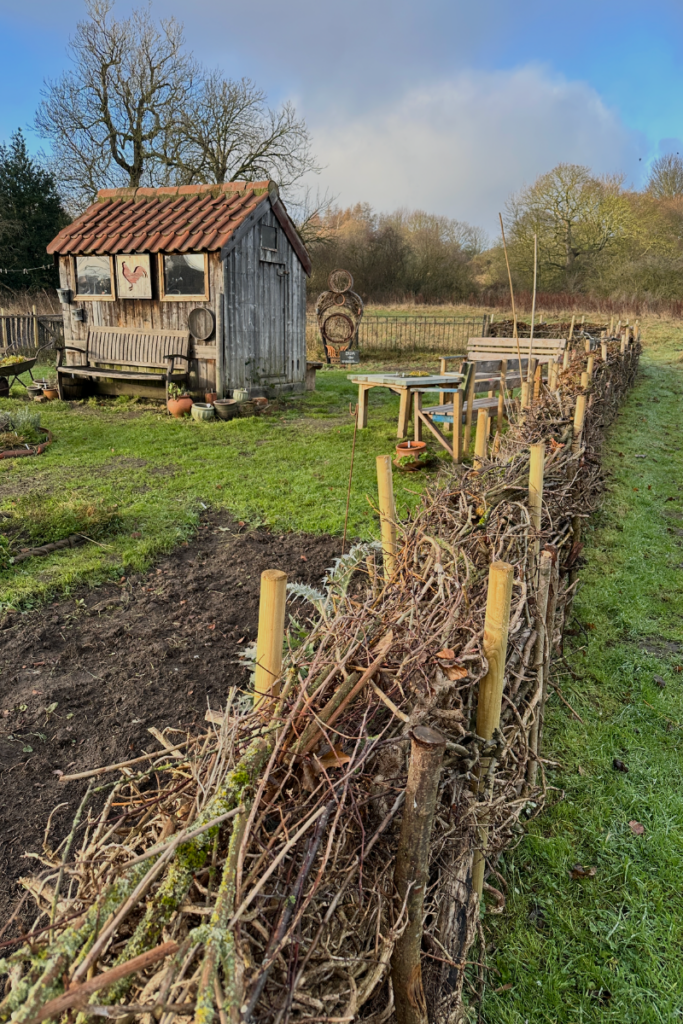
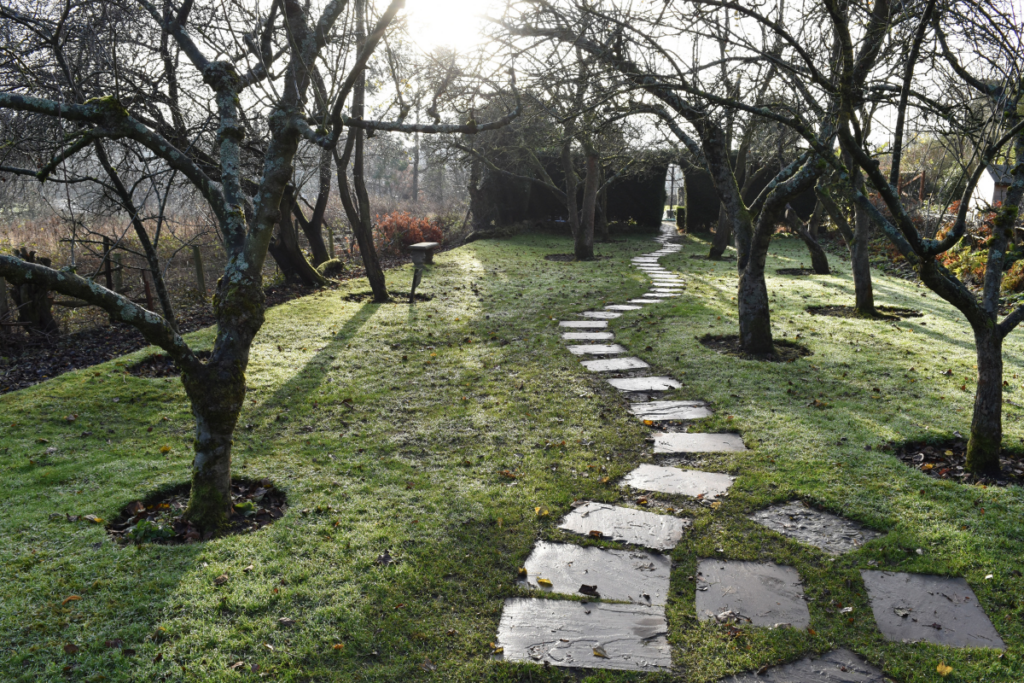
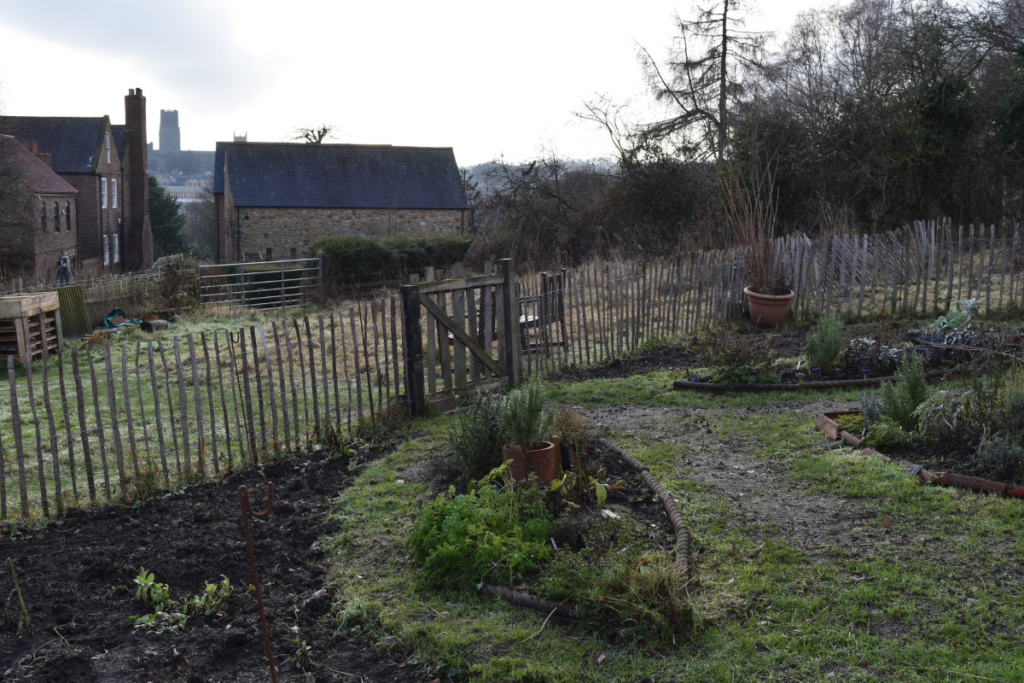
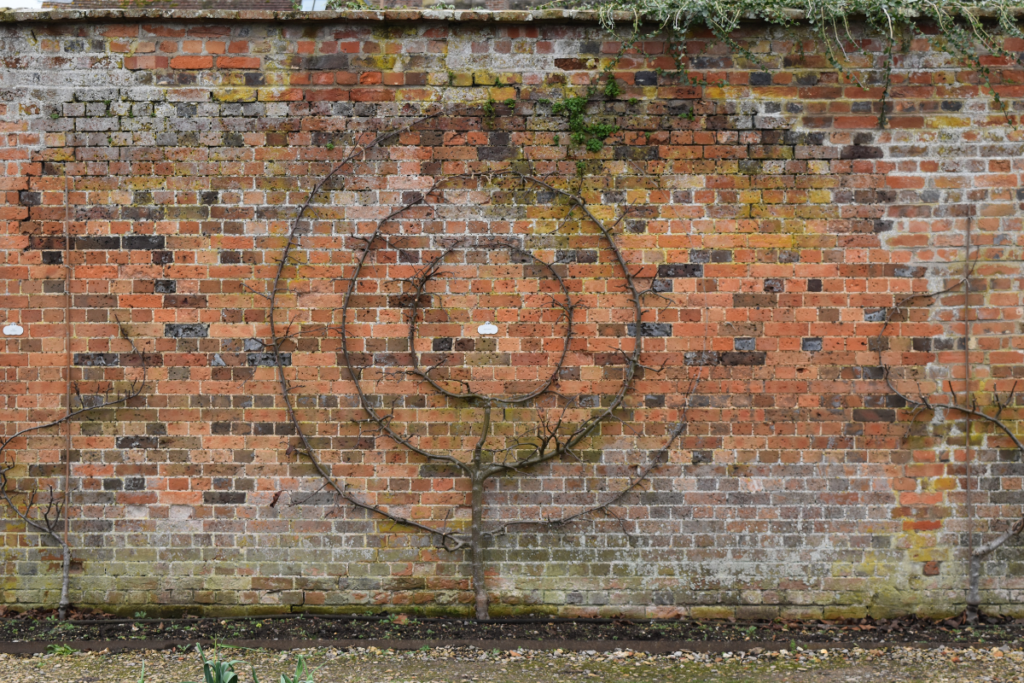
The next garden was Waterperry near Oxford. This was started by Beatrix Havergal in the 1930s as a school of horticulture for women. This site continues to train horticulturists for their Royal Horticulture Society certificates. In the garden, there are a wide variety of plants including a National Collection of saxifrages and other alpine plants. The glories of the summer garden are their extensive herbaceous borders backed by lovely walls. At this time of year, there are quieter pleasures including snowdrops and hellebores. The woody plants provide good structure and some berries for the birds. There is a museum of rural life, good gift shops, and an excellent tearoom. I recommend the gluten-free flapjacks.
A Quartet of Flower Histories for Winter Reading
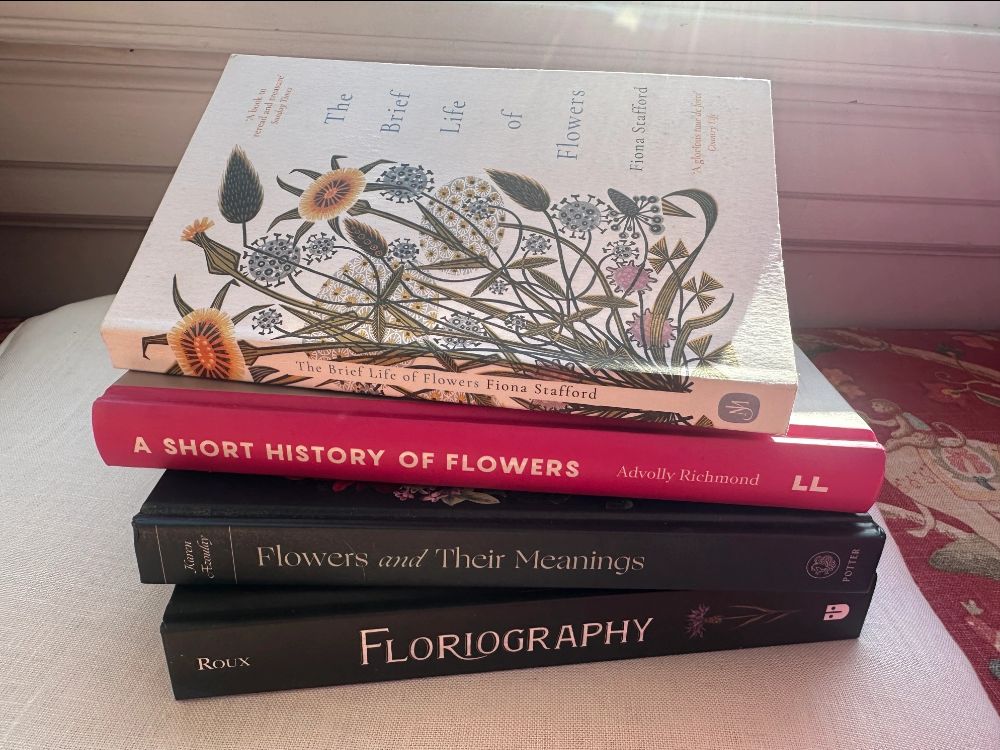
Plant of the Month:
Lonicera fragrantissima –
Winter-Flowering Honeysuckle
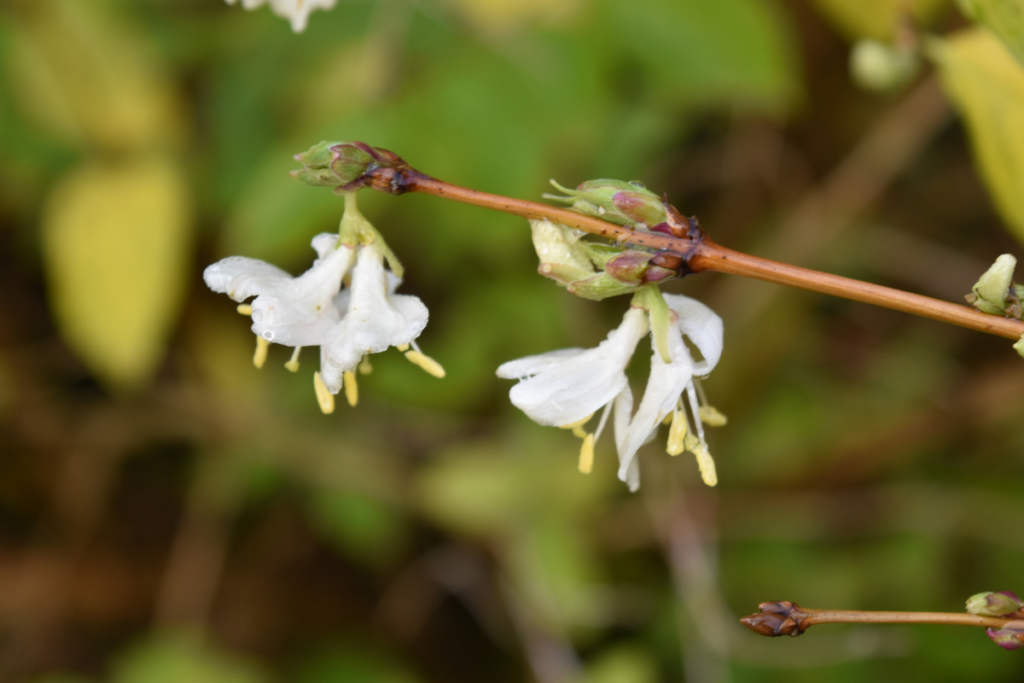
I love a fragrant plant, especially in the cold winter air because it seems so unexpected. But if you think about it, scent is a great way to attract cool-weather pollinators to your flowers. It travels easily on the wind and there are few enclosing leaves to block its path. The winter-flowering honeysuckle may bloom early or late in the season depending on your climate. On my recent trip to England, it was in bloom in December. In my garden, it starts flowering in January or February.
The tiny cream-colored flowers have prominent yellow stamens and do look like miniatures of the summer honeysuckles. The leaves may drop off in autumn or may cling on for the winter depending on the species of honeysuckle and the weather.
The plant is a substantial but rather untidy looking, woody shrub. Winter is the time when you realize why you have given precious garden space to this ungainly thing. On a sunny January day, I walk out of the back door and rhetorically ask the world “what is that gorgeous honeysuckle-like scent?” Then I realize that it is honeysuckle and all of the plant’s negative qualities are forgiven.
It is not often seen for sale these days. Mine was in the garden when I arrived. It is easy to propagate from cuttings and apparently hummingbirds spread their seeds to new areas. In some warm areas of the world, it can be invasive, so check your local lists to make sure it is okay to plant. If you cannot grow this honeysuckle, find another scented winter-flowering plant to add some fragrant excitement to your landscape.
Book Club:
The Brief Life of Flowers
I picked up this book a few years ago at one of my favorite bookshops—Blackwells in Oxford. I have not read it cover to cover but instead have dipped into it as the seasons pass. Each chapter is devoted to one flower and so it is perfect for bite-sized reading. The quote this month is from “Snowdrops,” which unsurprisingly is the first flower listed.
Fiona Stafford is an English Professor at Oxford University where her specialist subject is the Romantic period in literature. Fiona has written extensively with wide-ranging book titles that often include the natural world, literature, and art interwoven with personal anecdotes. This book suits my love of “a bit of this and bit of that” with lovely random facts, many of which now reside permanently in my brain. A bonus for me is among the flowers Fiona includes are many of my favorites, particularly the snowdrops, primroses, foxgloves, and poppies.
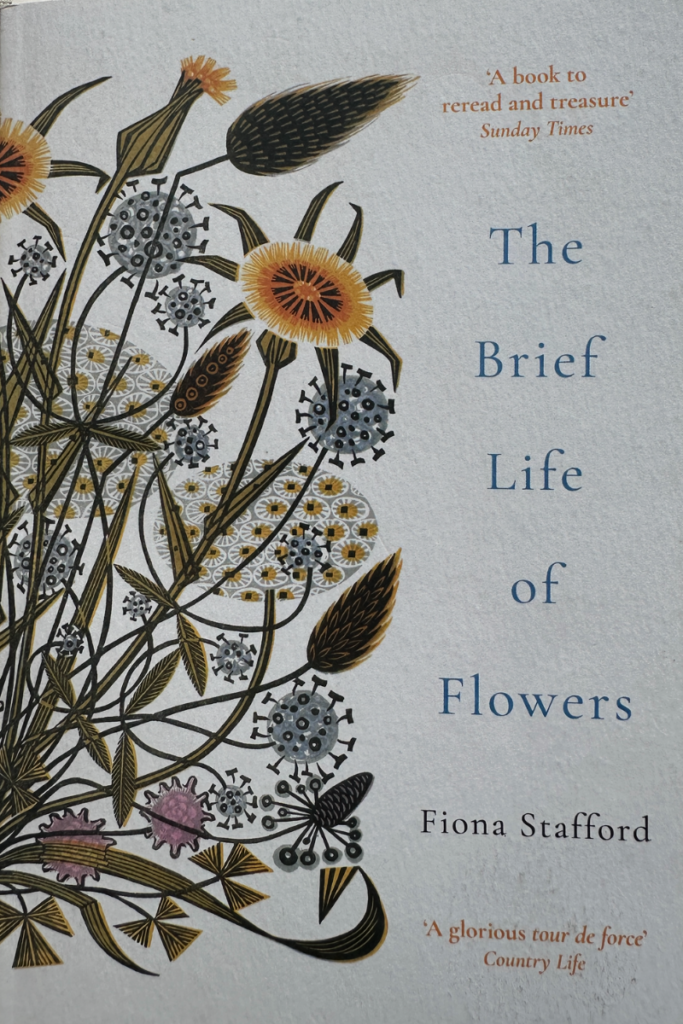
One of my favorite lines is actually the first one in the book, and we all know how hard it is to write good book beginnings. She starts, “I can measure my entire life in leaves and petals.” It is lovely yet simple and makes you understand from the outset that Fiona is a lover of plants. Her observations are spot-on and immerse you in the scene that she is describing. She continues later in that chapter with another memorable passage: “Flowers have a way of delivering surprises, even to those who have seen them appear in exactly the same place year after year. Their annual trick of looking new is easily accomplished—because they are new. The plants remain in place, but their flowers bud, break open, bloom broadly, and drop away into the earth.” If you are looking for a thoughtful and informative book to while away a few winter hours by the fire, I can recommend Fiona’s words about flowers.
Note: I am not sponsored to promote books found in these newsletters. They are featured because I truly love them.
In Case You Were Gardening…
Mineeapolis Seedswomen of the Early 1900s – November 11, 2024
Sowing the Seeds of a Flowery Garden – March 1, 2023
Snowdrops and Galanthomania – January 28, 2023
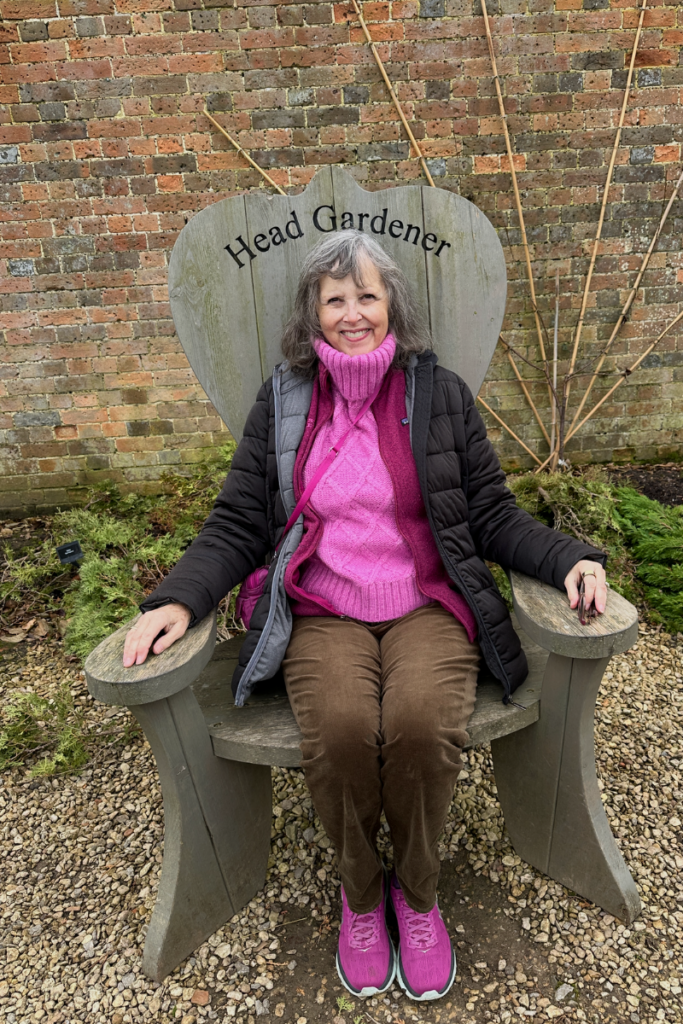
If you like this newsletter, please tell your gardening friends about it. It is easy to subscribe by contacting me via my website.
If you would like to see photos of my garden at Northview and images of my garden travels, please follow me on Instagram @NorthviewGarden and @JennyRoseCarey
Happy New Year, Gardening Friends! Bye for now.
Cheers,

PS: If you want to hear more of my thoughts and support me in what I do, check out my books. Glorious Shade celebrates the benefits of shade and shows you how to make the most of it. This information-rich, hardworking guide is packed with everything you need to successfully garden in the shadiest corners of a yard.The Ultimate Flower Gardener’s Guide gives home gardeners the confidence they need to create the flower-filled garden of their dreams. Instead of concentrating primarily on color, it brings flower shape and texture to the fore, helping homeowners make plant choices that come together in an aesthetically pleasing way.
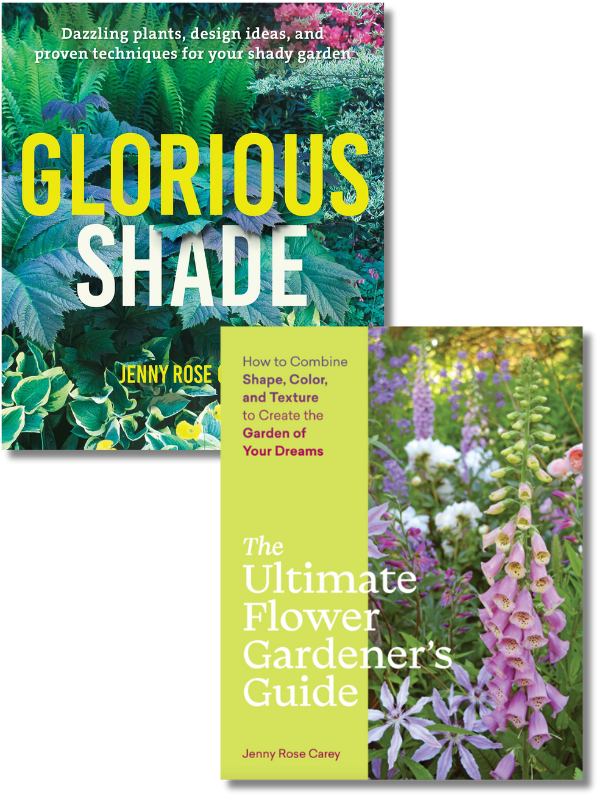




Leave a Reply